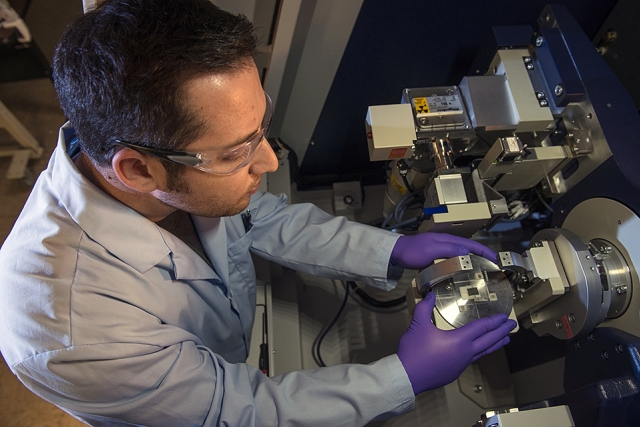
As the nation’s Uranium Center of Excellence, Y-12 must have the capability to study uranium and uranium alloys. Uranium has a complex internal structure that changes with each processing step. The site recently acquired one of the most high-performing, high-resolution X-ray diffractometers available today that will allow Y-12 scientists to advance the understanding of the processing changes that take place inside uranium.
An X-ray diffraction instrument produces X-rays, which are diffracted (scattered) by materials made from crystals. A detector producing a diffraction pattern collects all the diffracted X-rays. Diffraction patterns can be viewed as the fingerprints of a material, providing detailed information about its atomic structure, purity and properties. Y-12’s X-ray diffractometer has an optic system to view a material’s internal structure to an order of 10–7 mm in size.
Y-12 scientist Dr. Elena Garlea worked to procure the technology for the site. “Securing funding to purchase the instrument and developing a research program around it that supports our national security mission feels like a big accomplishment,” she said. “I liked developing the project from scratch — from concept to budget and planning to execution.”